Exploring the Impact of Fermentation in Organic Waste Management
In a world where waste management is becoming an increasingly pressing issue, the need for innovative solutions has never been greater. Fermentation, a natural metabolic process, offers a promising avenue for revolutionizing how we handle organic waste. By transforming organic materials into useful byproducts, fermentation not only reduces waste but also contributes to a more sustainable future. This article delves into the intricacies of fermentation, its benefits, various methods, and its applications in agriculture, while also addressing the challenges it faces and the exciting trends on the horizon.
At its core, fermentation is a biochemical process that converts sugars into acids, gases, or alcohol in the absence or presence of oxygen. This process is not just a fascinating scientific phenomenon; it plays a significant role in organic waste management. Imagine a world where food scraps and yard waste are not simply discarded but are instead transformed into valuable resources. This is the essence of what fermentation can achieve, turning our organic waste into something beneficial rather than a burden on our landfills.
The significance of fermentation in organic waste management cannot be overstated. As we face increasing environmental challenges, the need for effective waste reduction strategies is paramount. Fermentation provides a dual benefit: it minimizes the volume of waste we generate while simultaneously producing valuable byproducts, such as biogas and organic fertilizers. These byproducts can be harnessed to improve soil health and contribute to the circular economy, where waste is seen as a resource rather than a problem.
In the sections that follow, we will explore the various benefits of fermentation, including its environmental impact and cost-effectiveness, as well as the different methods employed in the fermentation process. We will also look at how fermentation can be applied in agriculture, the challenges it faces, and the future trends that could shape its role in sustainable waste management.
- What is fermentation? Fermentation is a metabolic process that converts sugars into acids, gases, or alcohol, and is utilized in various applications including waste management.
- How does fermentation benefit waste management? It reduces waste volume, produces valuable byproducts like biogas and fertilizers, and improves soil health.
- What are the methods of fermentation? The primary methods are anaerobic fermentation, which occurs without oxygen, and aerobic fermentation, which requires oxygen.
- Can fermentation be applied in agriculture? Yes, fermentation produces nutrient-rich fertilizers that enhance soil health, promoting sustainable farming practices.
- What challenges does fermentation face? Challenges include odor control, process efficiency, and the need for proper management techniques to optimize outcomes.
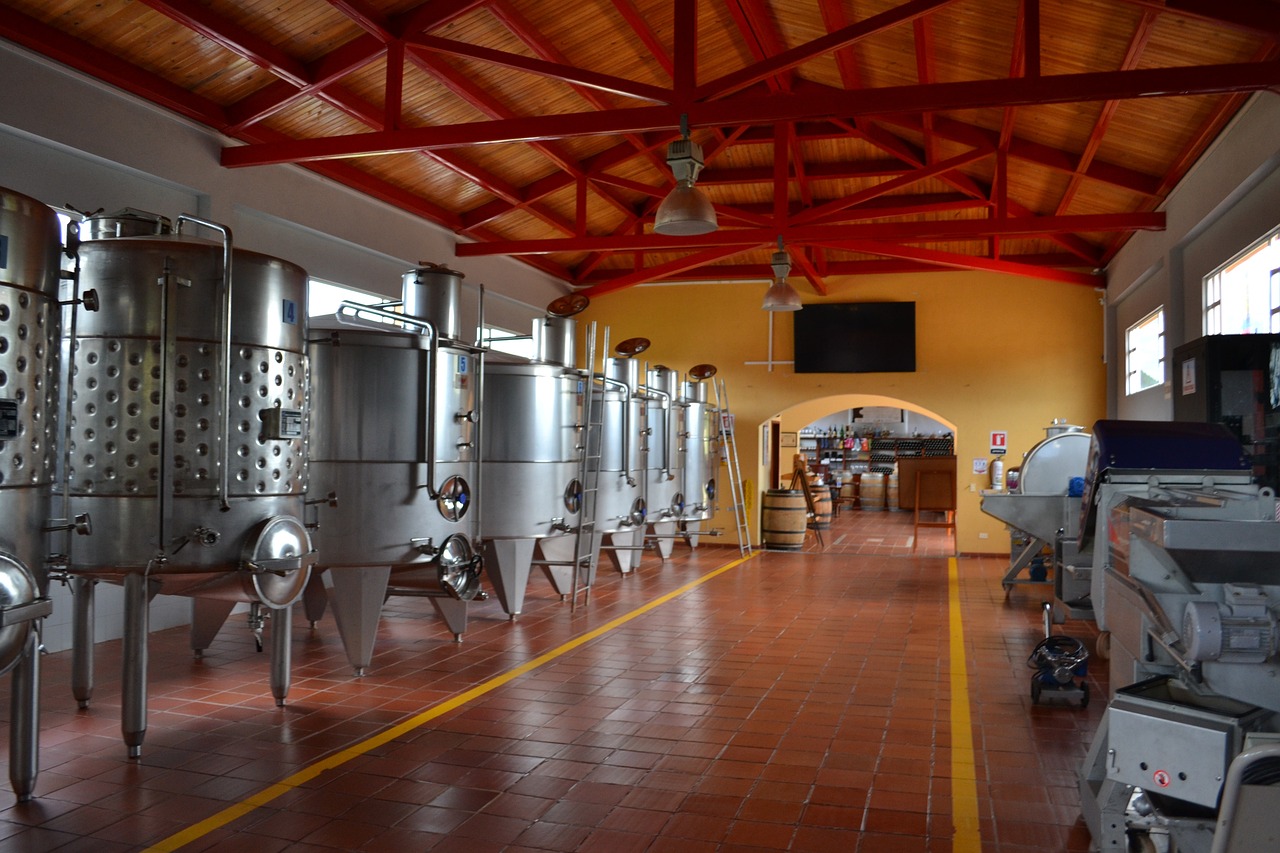
Understanding Fermentation
Fermentation is a fascinating and natural metabolic process that has been utilized by humans for centuries, often without us even realizing it. At its core, fermentation involves the conversion of sugars into acids, gases, or alcohol through the action of microorganisms like yeast and bacteria. This process is not just a culinary marvel—think of delicious bread, tangy yogurt, or refreshing kombucha—but it also plays a pivotal role in the management of organic waste. By harnessing the power of fermentation, we can transform waste materials into valuable resources, making it a cornerstone of sustainable practices.
The science behind fermentation is as intricate as it is interesting. When organic matter decomposes, microorganisms break down the sugars present in that matter. This breakdown can occur in two primary environments: anaerobic (without oxygen) and aerobic (with oxygen). Each environment produces different end products, which can be advantageous depending on the desired outcome. For instance, anaerobic fermentation generates biogas—a renewable energy source—while aerobic fermentation results in nutrient-rich compost that enriches soil health.
Understanding fermentation is not just for scientists or environmentalists; it’s a key concept that everyone should grasp, especially as we face mounting challenges related to waste management and environmental sustainability. The process can be likened to nature's recycling system, where waste is not merely discarded but transformed into something beneficial. This transformation is crucial in reducing the overall volume of waste that ends up in landfills, which is a significant contributor to greenhouse gas emissions.
Moreover, the significance of fermentation extends beyond waste reduction. It also plays a vital role in resource recovery. By converting organic waste into biogas and organic fertilizers, fermentation helps close the loop in the nutrient cycle. This means that instead of depleting our resources, we are effectively reusing what we already have. Imagine a world where waste is not a burden but a treasure trove of opportunities—this is the vision that fermentation brings to life.
In summary, fermentation is more than just a biological process; it is a transformative tool that can revolutionize how we manage organic waste. By understanding and applying fermentation techniques, we can contribute to a more sustainable future, one where waste is minimized, resources are recovered, and the health of our planet is prioritized.
- What is fermentation? Fermentation is a metabolic process that converts sugars into acids, gases, or alcohol through the action of microorganisms.
- How does fermentation help in waste management? It reduces the volume of organic waste, produces valuable byproducts like biogas and fertilizers, and improves soil health.
- What are the two main types of fermentation? The two main types are anaerobic fermentation (without oxygen) and aerobic fermentation (with oxygen).
- Can fermentation be used in agriculture? Yes, fermentation produces nutrient-rich fertilizers that enhance soil health and promote sustainable farming practices.

Benefits of Fermentation in Waste Management
When we think about waste management, it often conjures up images of overflowing landfills and the unpleasant odors that accompany them. However, fermentation offers a transformative solution that not only reduces waste but also creates valuable resources. Let's dive into the myriad of benefits that fermentation brings to the table in waste management.
First and foremost, one of the standout advantages of fermentation is its remarkable ability to reduce waste volume. Imagine a giant pile of organic waste—fermentation acts like a superhero, swooping in to shrink that pile significantly. By breaking down organic materials, fermentation can cut waste volume by up to 50%, making disposal a breeze. This reduction not only eases the burden on landfills but also minimizes the environmental impact associated with waste disposal.
In addition to waste reduction, fermentation plays a crucial role in environmental sustainability. By decreasing the amount of waste that ends up in landfills, fermentation helps lower greenhouse gas emissions, which are notorious for contributing to climate change. This is particularly important when you consider that organic waste decomposing in landfills produces methane, a potent greenhouse gas. By harnessing fermentation, we can significantly mitigate this issue, leading to a healthier planet.
Moreover, the cost-effectiveness of fermentation in waste management cannot be overstated. With reduced waste volume comes reduced disposal costs. This is a win-win situation for businesses and municipalities alike. By investing in fermentation processes, organizations can save money while simultaneously contributing to a more sustainable future. In fact, many studies have shown that the economic benefits of fermentation often outweigh the initial implementation costs.
Another compelling benefit of fermentation is the production of valuable byproducts. Through fermentation, we can generate biogas and organic fertilizers. Biogas, primarily composed of methane, can be harnessed as a renewable energy source, providing an alternative to fossil fuels. On the other hand, organic fertilizers produced from fermented waste can enrich soil health, promoting sustainable agricultural practices. This creates a circular economy where waste is transformed into valuable resources, thus enhancing resource recovery.
To illustrate the benefits of fermentation in waste management, consider the following table that summarizes its key advantages:
| Benefit | Description |
|---|---|
| Reduction of Waste Volume | Significantly decreases the amount of organic waste, making disposal easier. |
| Environmental Impact | Minimizes landfill use and lowers greenhouse gas emissions. |
| Cost-Effectiveness | Reduces disposal costs, making it economically viable. |
| Production of Valuable Byproducts | Generates biogas and organic fertilizers, enhancing resource recovery. |
In summary, the benefits of fermentation in waste management are not just theoretical; they are practical and impactful. By reducing waste volume, improving environmental sustainability, offering cost savings, and producing valuable byproducts, fermentation stands out as a powerful tool in the quest for more effective waste management solutions. It's a process that not only addresses the challenges of today but also paves the way for a sustainable future.
- What is fermentation? Fermentation is a natural metabolic process that converts sugars into acids, gases, or alcohol, playing a crucial role in organic waste management.
- How does fermentation reduce waste volume? By breaking down organic materials, fermentation can significantly decrease the volume of waste, making disposal more efficient.
- What are the byproducts of fermentation? Fermentation can produce biogas and organic fertilizers, both of which have valuable applications in energy production and agriculture.
- Is fermentation environmentally friendly? Yes, fermentation minimizes landfill use and lowers greenhouse gas emissions, contributing to a healthier environment.

Reduction of Waste Volume
One of the primary benefits of fermentation is its remarkable ability to significantly decrease the volume of organic waste. Imagine a mountain of food scraps, yard waste, and other organic materials slowly decomposing in a landfill. It's not just unsightly; it's a major contributor to greenhouse gas emissions. Fermentation swoops in like a superhero, transforming this waste into something far more manageable. By breaking down these materials, fermentation can reduce their volume by up to 90% in some cases. This means that what once filled up your trash bins can now fit into a fraction of that space.
But how does this happen? When organic matter ferments, it undergoes a transformation that breaks down complex compounds into simpler ones. This process releases gases, primarily carbon dioxide and methane, which escape into the atmosphere. The remaining material, now significantly reduced, can be repurposed or disposed of more easily. This not only makes waste management more efficient but also aligns perfectly with our need to be more sustainable.
Furthermore, the environmental impact of reduced waste volume cannot be overstated. Fewer materials in landfills mean less pressure on these sites, which are often overflowing and struggling to keep up with the sheer amount of waste produced daily. By minimizing landfill use, we are effectively lowering the potential for harmful leachate and reducing the release of methane, a potent greenhouse gas that contributes to climate change. It's like hitting two birds with one stone—less waste and a healthier planet!
Another significant aspect of waste volume reduction is its cost-effectiveness. With less waste to manage, disposal costs plummet. This is particularly beneficial for municipalities and businesses that handle large quantities of organic waste. The savings can be redirected towards other important initiatives, such as community programs or further sustainability efforts. In essence, fermentation not only makes sense from an ecological standpoint but also from an economic one.
In conclusion, the reduction of waste volume through fermentation is a game-changer in organic waste management. It streamlines disposal processes, reduces environmental impact, and saves money—all while contributing to a more sustainable future. As we continue to explore and implement fermentation techniques, we can look forward to a cleaner, greener planet.
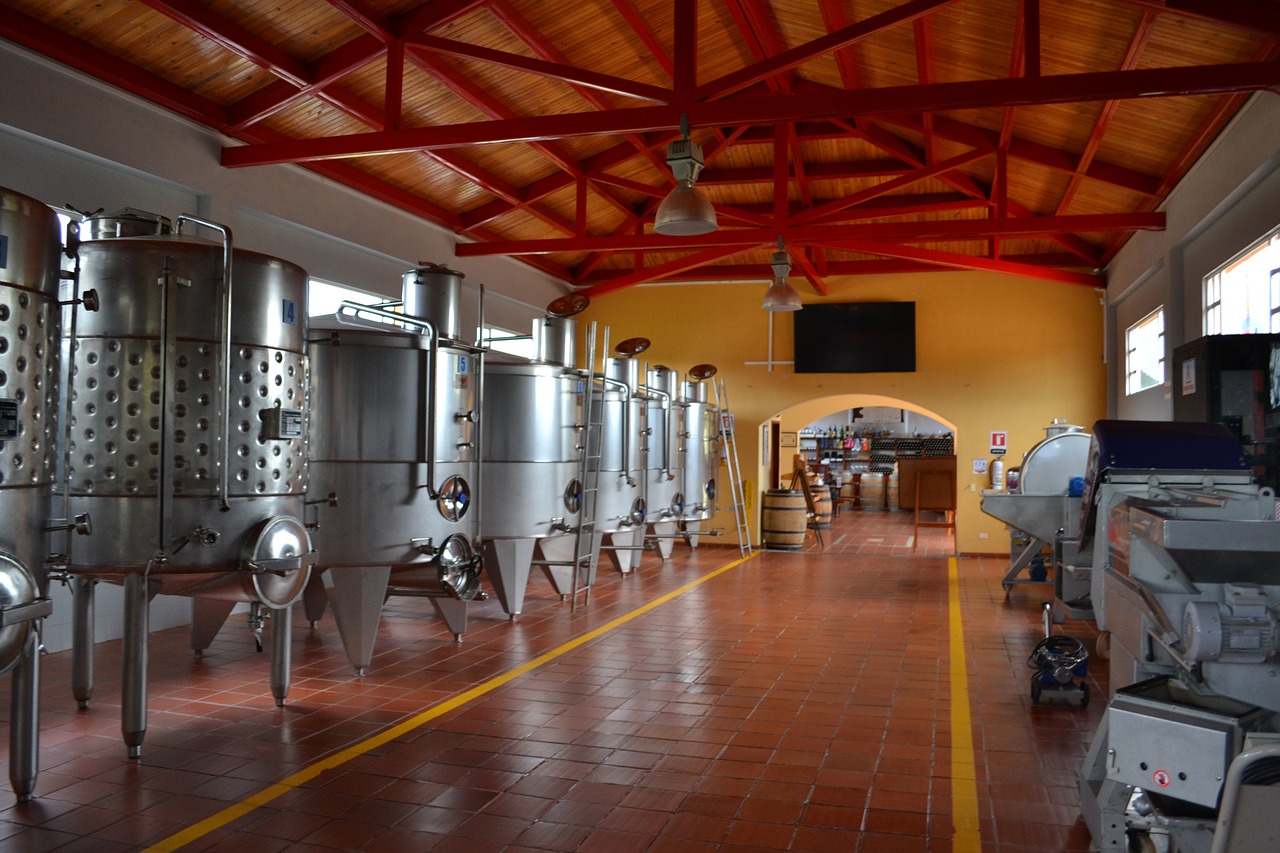
Environmental Impact
The environmental impact of fermentation in organic waste management is profound and multifaceted. By significantly reducing the volume of organic waste, fermentation plays a vital role in minimizing landfill use. When organic waste decomposes in landfills, it generates methane—a potent greenhouse gas that is over 25 times more effective at trapping heat in the atmosphere than carbon dioxide over a 100-year period. In contrast, fermentation processes, particularly anaerobic digestion, convert this waste into biogas, which can be harnessed as a renewable energy source. This not only reduces the amount of waste that ends up in landfills but also mitigates harmful emissions, contributing to a healthier planet.
Furthermore, the byproducts of fermentation, such as digestate from anaerobic processes, can be used as organic fertilizers. This reduces the need for synthetic fertilizers, which often lead to soil degradation and water pollution through runoff. By enriching the soil naturally, fermentation enhances soil health, promotes biodiversity, and supports sustainable agricultural practices.
Another key environmental benefit of fermentation is its role in promoting a circular economy. Instead of viewing organic waste as a problem, fermentation transforms it into valuable resources. This shift in perspective not only conserves natural resources but also reduces the carbon footprint associated with traditional waste management methods. In essence, fermentation helps close the loop in waste management by turning waste into a resource, thus fostering sustainability.
In summary, the environmental impact of fermentation extends beyond waste reduction. It encompasses energy production, soil health improvement, and the promotion of sustainable practices, making it a crucial component in the fight against climate change.
- What is fermentation?
Fermentation is a metabolic process that converts sugars into acids, gases, or alcohol, often used in food production and waste management.
- How does fermentation reduce waste volume?
Fermentation breaks down organic materials, significantly decreasing their mass and volume, which makes waste disposal more efficient.
- What are the byproducts of fermentation?
Common byproducts include biogas, which can be used for energy, and digestate, which can be utilized as organic fertilizer.
- What challenges does fermentation face in waste management?
Challenges include odor control, process efficiency, and the need for proper technology and infrastructure.
- What is the future of fermentation in waste management?
The future looks promising with technological advancements and an increasing emphasis on sustainability driving innovation in fermentation processes.
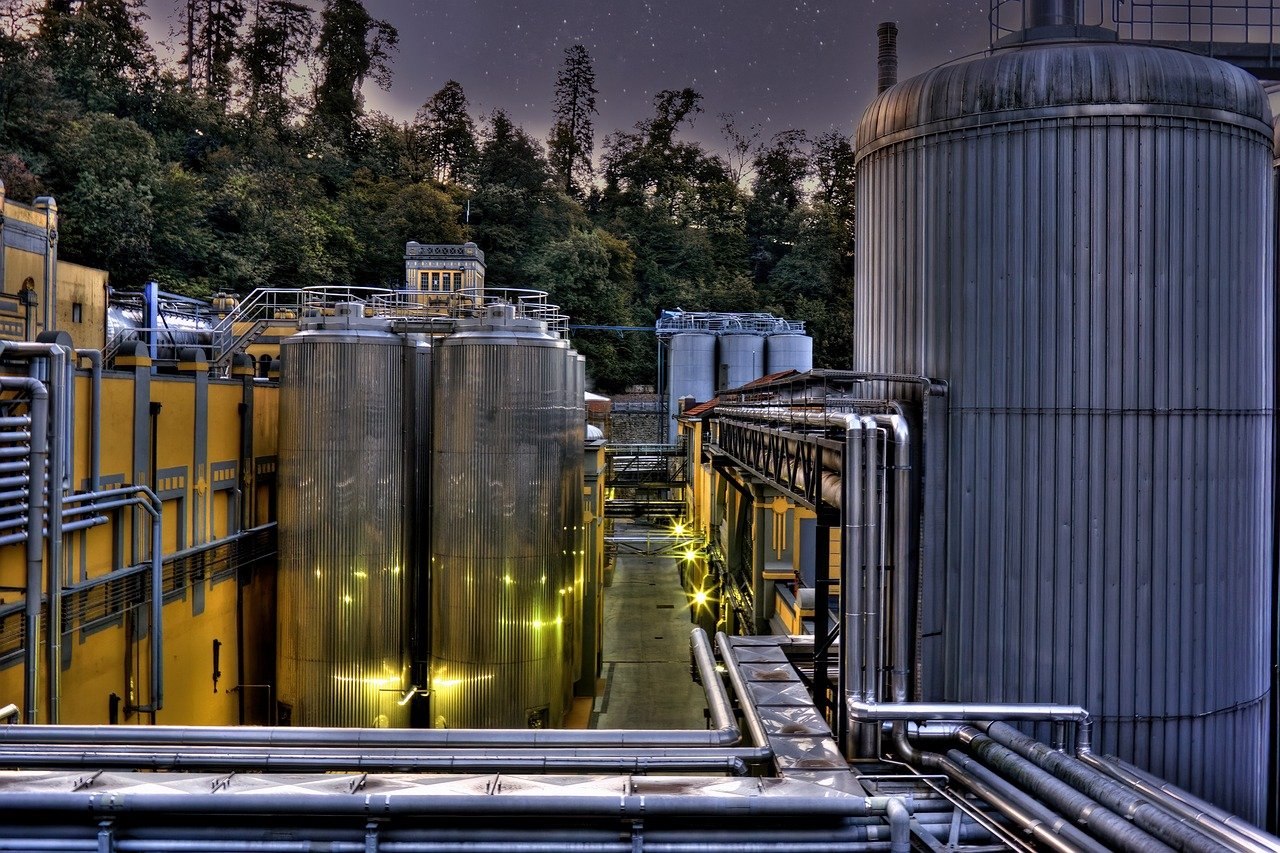
Cost-Effectiveness
When it comes to managing organic waste, the of fermentation cannot be overstated. Imagine a scenario where businesses and municipalities not only reduce the volume of waste but also cut down their disposal costs significantly. Sounds like a win-win, right? This is precisely what fermentation achieves. By converting organic waste into valuable byproducts, such as biogas and organic fertilizers, fermentation processes can lead to substantial savings in waste management expenses.
To illustrate this point, let’s consider a typical waste management scenario. The costs associated with landfill disposal can be quite high, especially when dealing with large volumes of organic waste. However, by employing fermentation techniques, these costs can be reduced dramatically. For instance, the initial investment in fermentation technology may seem steep, but the long-term savings on disposal fees and potential revenue from byproducts can offset these costs quickly.
Here’s a quick breakdown of how fermentation can save money:
| Aspect | Traditional Waste Management | Fermentation-Based Management |
|---|---|---|
| Waste Disposal Costs | High | Low |
| Byproduct Revenue | None | High (e.g., biogas, organic fertilizer) |
| Environmental Penalties | Possible | Reduced |
Moreover, fermentation can lead to lower operational costs. For instance, facilities that utilize anaerobic digestion for organic waste can generate their own energy through biogas production, which can be used to power operations or sold back to the grid. This not only helps in offsetting energy costs but also contributes to a more sustainable energy model. In essence, fermentation transforms what was once a liability—organic waste—into a valuable asset.
In conclusion, the of fermentation in organic waste management is a compelling reason for its adoption. By reducing disposal costs, generating revenue from byproducts, and lowering operational expenses, fermentation presents a financially viable solution that aligns with sustainable practices. It's not just about saving money; it's about creating a more efficient and responsible approach to waste management that benefits everyone involved.
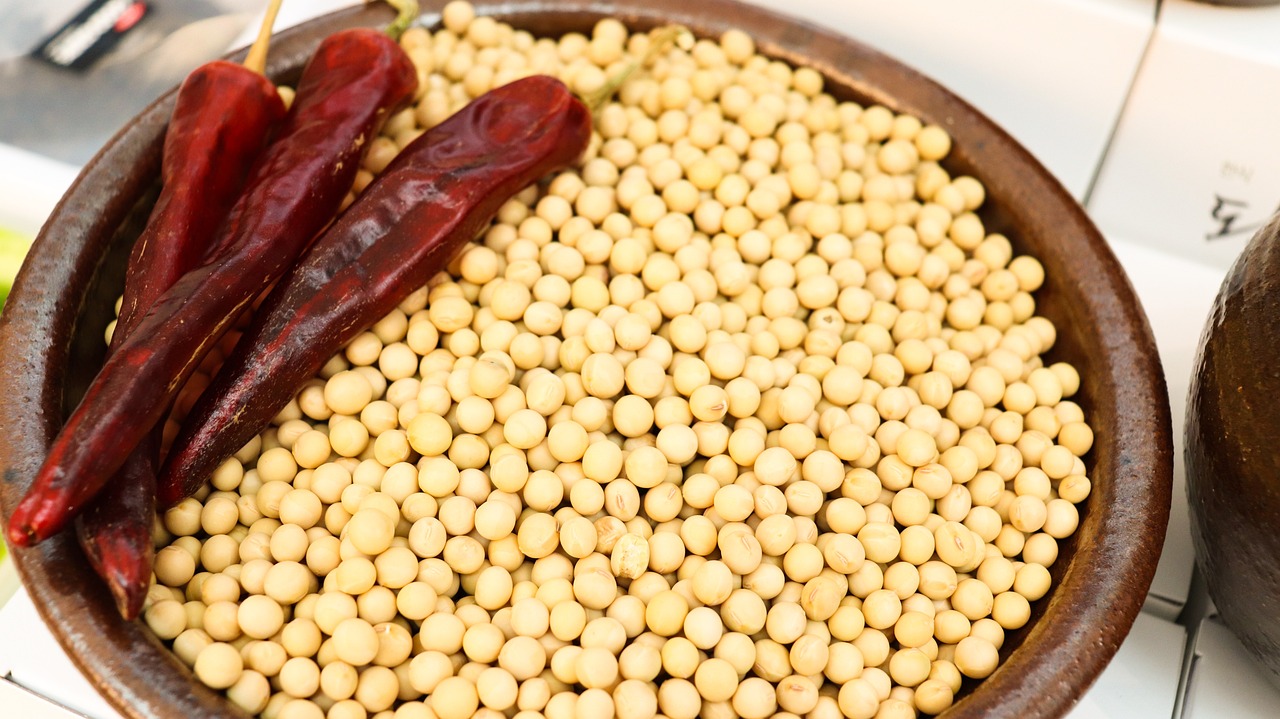
Production of Valuable Byproducts
When we talk about fermentation in organic waste management, one of the most exciting aspects is the . Imagine taking what would otherwise be trash and transforming it into something useful—this is the magic of fermentation! Through various fermentation processes, organic waste can yield byproducts that not only help in waste management but also provide significant economic and environmental benefits.
Two of the most notable byproducts of fermentation are biogas and organic fertilizers. Let’s dive deeper into these treasures:
| Byproduct | Description | Applications |
|---|---|---|
| Biogas | A renewable energy source primarily composed of methane and carbon dioxide, produced during anaerobic fermentation. | Used for heating, electricity generation, and as a vehicle fuel. |
| Organic Fertilizers | Nutrient-rich fertilizers derived from the digestate left after fermentation, enhancing soil health. | Applied in agriculture to improve soil quality and crop yield. |
Biogas is particularly fascinating. It’s like a green energy superhero! This renewable source can be harnessed to generate electricity or heat, significantly reducing reliance on fossil fuels. Not only does it provide a sustainable energy solution, but it also helps in cutting down greenhouse gas emissions. By utilizing biogas, we can transform waste into energy, effectively closing the loop in waste management.
On the other hand, organic fertilizers produced from fermentation processes offer a natural alternative to chemical fertilizers. These fertilizers enrich the soil with essential nutrients, promoting healthy plant growth while minimizing the risk of pollution. They're like a nourishing meal for the soil, enhancing its structure and fertility. Farmers who adopt organic fertilizers often see improved crop yields and better soil health, which is a win-win situation for both the environment and agricultural productivity.
In summary, the production of valuable byproducts through fermentation not only aids in effective waste management but also contributes significantly to sustainability efforts. By harnessing biogas and organic fertilizers, we’re not just reducing waste; we’re creating a cycle of resource recovery that benefits the planet and our communities.
- What is fermentation? Fermentation is a metabolic process that converts sugars to acids, gases, or alcohol, often used in waste management to break down organic materials.
- What are the benefits of biogas? Biogas is a renewable energy source that can be used for heating, electricity, and as a vehicle fuel, reducing reliance on fossil fuels.
- How does organic fertilizer improve soil health? Organic fertilizers enhance soil structure and fertility, providing essential nutrients that promote healthy plant growth.
- Can fermentation reduce waste volume? Yes, fermentation significantly decreases the volume of organic waste, making disposal easier and more efficient.

Methods of Fermentation
When it comes to organic waste management, the play a pivotal role in determining the efficiency and effectiveness of the process. Understanding these methods is essential for anyone looking to reduce waste and promote sustainability. The two primary types of fermentation are anaerobic fermentation and aerobic fermentation. Each method has its unique characteristics, applications, and benefits, making them suitable for different scenarios in waste management.
Anaerobic fermentation occurs in the absence of oxygen, which is a fascinating process that allows microorganisms to break down organic matter. This method is particularly popular in large-scale waste management systems, such as biogas plants. During anaerobic fermentation, organic waste is converted into biogas, a renewable energy source, and digestate, which can be used as a nutrient-rich fertilizer. The process not only reduces the volume of waste but also generates energy that can be harnessed for various applications, such as heating or electricity generation.
On the other hand, aerobic fermentation requires oxygen to thrive. This method is commonly utilized in composting organic materials, where microorganisms decompose the waste in the presence of air. The result is nutrient-rich compost that enhances soil health and fertility. Aerobic fermentation is often seen as a more straightforward approach, as it can be done on a smaller scale, making it accessible for home gardeners and small farms. Additionally, the compost produced can be used to enrich gardens and agricultural lands, promoting sustainable farming practices.
Both methods of fermentation have their advantages and can be selected based on the specific needs of a waste management system. For instance, anaerobic fermentation is ideal for large quantities of waste where energy recovery is a priority, while aerobic fermentation is favored for its simplicity and effectiveness in producing high-quality compost. Understanding the nuances of each method can help individuals and organizations make informed decisions about their waste management strategies.
| Method of Fermentation | Oxygen Requirement | Byproducts | Typical Applications |
|---|---|---|---|
| Anaerobic Fermentation | None | Biogas, Digestate | Biogas plants, Large-scale waste management |
| Aerobic Fermentation | Required | Nutrient-rich Compost | Composting, Small-scale gardening |
In summary, the methods of fermentation—anaerobic and aerobic—each offer unique benefits and applications in organic waste management. By harnessing these processes, we can significantly reduce waste volume, produce valuable byproducts, and contribute to a more sustainable future.
- What is the main difference between anaerobic and aerobic fermentation? Anaerobic fermentation occurs without oxygen and produces biogas, while aerobic fermentation requires oxygen and results in compost.
- Can I use both methods in my waste management system? Yes, many systems incorporate both methods to maximize waste reduction and resource recovery.
- How can I start composting at home? You can start composting by collecting organic waste, ensuring proper aeration, and maintaining moisture levels.

Anaerobic Fermentation
Anaerobic fermentation is a fascinating process that occurs in the absence of oxygen, transforming organic materials into valuable resources. This method is particularly significant in the realm of organic waste management, as it allows for the breakdown of complex organic matter into simpler compounds. The primary products of anaerobic fermentation are biogas and digestate. Biogas, primarily composed of methane, can be harnessed as a renewable energy source, while digestate serves as a nutrient-rich byproduct that can be applied to soil.
One of the key advantages of anaerobic fermentation is its ability to handle a wide variety of organic waste materials. From food scraps to agricultural residues, this process can effectively reduce the volume of waste while generating energy. Imagine a bustling city producing tons of organic waste daily; anaerobic fermentation can convert this waste into a clean energy source, thus closing the loop on waste management.
The anaerobic fermentation process typically involves several stages, including hydrolysis, acidogenesis, acetogenesis, and methanogenesis. Each stage plays a crucial role in breaking down organic matter and producing biogas. Here’s a brief overview of these stages:
| Stage | Description |
|---|---|
| Hydrolysis | Complex organic materials are broken down into simpler sugars and fatty acids. |
| Acidogenesis | Bacteria convert sugars into volatile fatty acids, hydrogen, and carbon dioxide. |
| Acetogenesis | Volatile fatty acids are further converted into acetic acid, hydrogen, and carbon dioxide. |
| Methanogenesis | Methanogenic bacteria produce methane, which is the primary component of biogas. |
Moreover, anaerobic fermentation is not just about waste reduction; it also offers significant environmental benefits. By diverting organic waste from landfills, this process helps minimize greenhouse gas emissions, thus playing a vital role in combating climate change. Think about it: less waste in landfills means less methane escaping into the atmosphere. It’s a win-win situation!
However, like any process, anaerobic fermentation has its challenges. Proper management is essential to prevent issues such as odor and process inefficiencies. For instance, maintaining the right temperature and pH levels is crucial for optimal microbial activity. A well-designed anaerobic digester can help mitigate these challenges, ensuring a smooth fermentation process.
In summary, anaerobic fermentation is a powerful tool in organic waste management, transforming waste into energy and valuable byproducts while reducing environmental impact. As we continue to explore and innovate in this field, the potential for anaerobic fermentation to contribute to sustainable practices becomes increasingly clear.
- What types of waste can be processed through anaerobic fermentation?
Anaerobic fermentation can process a variety of organic wastes, including food scraps, agricultural residues, and even some types of industrial waste.
- How is the biogas produced in anaerobic fermentation used?
Biogas can be used for electricity generation, heating, or as a vehicle fuel. It is a renewable energy source that can help reduce reliance on fossil fuels.
- What is digestate, and how is it used?
Digestate is the nutrient-rich residue left after anaerobic fermentation. It can be used as a fertilizer to improve soil health and support plant growth.

Aerobic Fermentation
Aerobic fermentation is a fascinating process that occurs in the presence of oxygen, transforming organic materials into valuable resources. This method is primarily utilized in composting, where microorganisms break down organic matter—including food scraps, yard waste, and agricultural residues—into nutrient-rich compost. Imagine a bustling city of microorganisms working tirelessly to convert waste into something beneficial for the earth. It's a perfect example of nature's recycling system at work!
One of the most significant advantages of aerobic fermentation is its ability to produce compost that enhances soil health. The end product is packed with essential nutrients, beneficial microorganisms, and organic matter that can improve soil structure and fertility. By incorporating this compost into agricultural practices, farmers can reduce their reliance on chemical fertilizers, fostering a more sustainable approach to farming.
During the aerobic fermentation process, the microorganisms consume the organic matter and release carbon dioxide, heat, and water. This process not only reduces the volume of waste but also generates heat, which can help in the breakdown of pathogens and weed seeds, making the compost safer and more effective. It's like a natural oven, cooking the waste into a rich, dark humus that can rejuvenate tired soils.
However, aerobic fermentation isn't without its challenges. Proper aeration is crucial to prevent the compost from becoming anaerobic, which can lead to unpleasant odors and inefficient decomposition. To maintain optimal conditions, composters often turn the pile regularly, allowing oxygen to circulate and ensuring that the microorganisms thrive. This turning process can be likened to stirring a pot of soup; it ensures that all ingredients are evenly cooked and flavorful.
In summary, aerobic fermentation is a vital process in organic waste management that not only reduces waste volume but also produces a valuable byproduct—compost. This compost can significantly improve soil health, promoting sustainable agricultural practices. As we continue to explore and innovate within this field, the potential for aerobic fermentation to contribute to a greener future is immense.
- What is aerobic fermentation?
Aerobic fermentation is the process of breaking down organic matter with the help of oxygen, resulting in the production of compost that enriches soil health. - What materials can be composted using aerobic fermentation?
Common materials include kitchen scraps, yard waste, and agricultural residues. - How often should I turn my compost pile?
It is recommended to turn your compost pile every few weeks to maintain aeration and promote efficient decomposition. - Can aerobic fermentation produce odors?
If managed properly, aerobic fermentation should not produce unpleasant odors. However, if the compost becomes anaerobic, it may emit foul smells.

Application in Agriculture
Fermentation processes are proving to be a game-changer in the agricultural sector, offering innovative solutions that enhance soil health and promote sustainable farming practices. By transforming organic waste into nutrient-rich fertilizers through fermentation, farmers can significantly improve crop yields while minimizing their reliance on synthetic fertilizers. This not only contributes to a healthier ecosystem but also supports the principles of organic farming.
One of the most exciting aspects of fermentation in agriculture is the production of biogas and digestate. Biogas, a renewable energy source, can be harnessed for heating or electricity generation, providing farmers with an alternative energy solution that reduces operational costs. On the other hand, digestate, the solid byproduct of anaerobic fermentation, is rich in nutrients such as nitrogen, phosphorus, and potassium, making it an excellent organic fertilizer. When applied to the soil, digestate enhances its fertility, improves structure, and promotes microbial activity, leading to healthier plants and better yields.
Moreover, the use of fermented organic materials in agriculture helps in closing the nutrient loop. By recycling agricultural waste, such as crop residues and livestock manure, through fermentation, farmers can return valuable nutrients back to the soil. This practice not only reduces waste but also diminishes the environmental impact associated with chemical fertilizers. In addition, the incorporation of fermented products into soil can improve its water retention capacity, reducing the need for irrigation and making farming more resilient to drought conditions.
Despite these advantages, it is essential to recognize that the successful application of fermentation in agriculture requires careful management and understanding of the specific needs of the crops being cultivated. Farmers must consider factors such as soil type, crop requirements, and local climate conditions to maximize the benefits of fermented fertilizers. Additionally, ongoing research and development in fermentation technology are paving the way for more efficient methods and better products tailored to meet the diverse needs of modern agriculture.
In summary, the application of fermentation in agriculture is not just about waste management; it’s about creating a sustainable future for farming. By leveraging the power of fermentation, farmers can enhance soil health, increase productivity, and contribute to environmental sustainability, ultimately leading to a more resilient agricultural system.
- What is fermentation? Fermentation is a metabolic process that converts sugars into acids, gases, or alcohol, often used in organic waste management to produce valuable byproducts.
- How does fermentation benefit agriculture? It produces nutrient-rich fertilizers and biogas, enhances soil health, and promotes sustainable farming practices.
- Can fermentation reduce the need for chemical fertilizers? Yes, by recycling organic waste into fertilizers, fermentation can decrease reliance on synthetic fertilizers.
- What are the challenges of using fermentation in agriculture? Challenges include odor control and the need for proper management of fermentation processes to ensure efficiency.

Challenges and Limitations
While the benefits of fermentation in organic waste management are numerous and compelling, it is essential to acknowledge the that accompany this process. One of the most prominent issues is odor control. During fermentation, particularly in anaerobic processes, the production of volatile organic compounds can lead to unpleasant smells that may disturb nearby communities. This challenge necessitates effective management strategies to mitigate odor emissions, ensuring that fermentation facilities can operate without causing nuisance to the surrounding environment.
Another significant limitation is process efficiency. The efficiency of fermentation can be influenced by various factors, including temperature, pH levels, and the composition of the organic waste. If these parameters are not optimized, the fermentation process may not yield the expected results, leading to lower biogas production or insufficient nutrient recovery. This inefficiency can deter potential users from adopting fermentation as a primary waste management strategy.
Furthermore, initial investment costs for setting up fermentation systems can be a barrier for small-scale operators or farms. While the long-term benefits are substantial, the upfront costs associated with technology, infrastructure, and maintenance can pose a significant hurdle. In many cases, financial incentives or government support can help alleviate this challenge, but not all regions have such resources available.
Additionally, there is often a lack of public awareness and education regarding fermentation processes. Many individuals and organizations may not fully understand the advantages of fermentation or how to implement it effectively. This gap in knowledge can lead to skepticism and reluctance to adopt fermentation technologies, even when they are viable options for waste management.
To address these challenges, stakeholders in the field of organic waste management must prioritize education and outreach efforts. By increasing awareness of the benefits of fermentation and providing resources to help optimize processes, we can pave the way for broader adoption. Innovative solutions such as odor control technologies and improved fermentation systems can also play a crucial role in overcoming these limitations.
In summary, while fermentation presents exciting opportunities for organic waste management, it is essential to remain cognizant of the challenges that exist. By tackling issues like odor control, process efficiency, and public awareness, we can unlock the full potential of fermentation as a sustainable waste management solution.
- What is fermentation? Fermentation is a natural metabolic process that converts sugars into acids, gases, or alcohol, often used in organic waste management to reduce waste volume and produce valuable byproducts.
- How does fermentation help in waste management? Fermentation reduces the volume of organic waste, produces biogas and organic fertilizers, and improves soil health, contributing to sustainable practices.
- What are the main challenges of fermentation? The main challenges include odor control, process efficiency, initial investment costs, and lack of public awareness.
- Can fermentation be applied in agriculture? Yes, fermentation processes can provide nutrient-rich fertilizers and improve soil health, promoting sustainable farming practices.
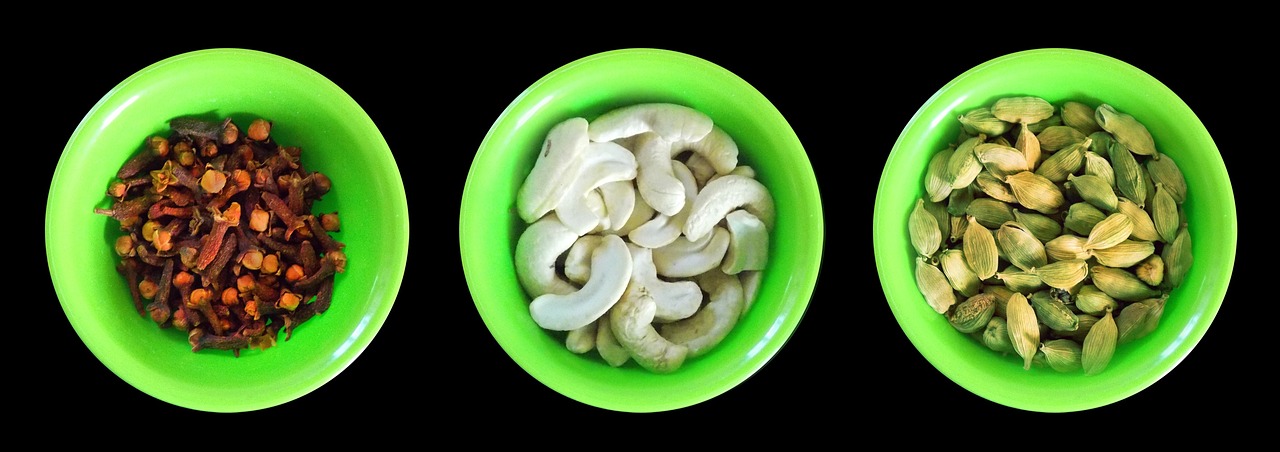
Future Trends in Fermentation
As we look ahead, the future of fermentation in organic waste management is not just promising; it's downright exciting! With the rapid pace of technological advancements and a growing global emphasis on sustainability, fermentation is poised to become a cornerstone of eco-friendly waste management practices. Imagine a world where your food scraps not only disappear but transform into energy and fertilizers that nourish our planet. Sounds like science fiction? Well, it’s becoming a reality!
One of the most significant trends is the integration of smart technology into fermentation processes. This includes the use of sensors and data analytics to monitor fermentation conditions in real-time. By optimizing factors like temperature and pH levels, we can enhance the efficiency of the fermentation process, leading to higher yields of biogas and fertilizers. As these technologies become more affordable and accessible, even small-scale operations can benefit, making it easier for communities to manage their organic waste sustainably.
Another exciting development is the increasing focus on diversifying feedstocks for fermentation. While traditional organic waste like food scraps and yard waste has been the primary focus, researchers are now exploring the potential of other materials. For instance, agricultural residues, food processing waste, and even certain types of industrial waste can be fermented to produce valuable byproducts. This diversification not only maximizes resource recovery but also reduces the burden on landfills.
Moreover, we are witnessing a growing trend towards circular economy practices. In this model, waste is viewed not as a problem but as a resource. Fermentation plays a crucial role in this paradigm shift by transforming waste into valuable products, thereby closing the loop in resource management. For example, the biogas produced through anaerobic fermentation can be used to generate electricity or heat, while the digestate can serve as a nutrient-rich fertilizer for crops. This interconnectedness fosters a more sustainable and resilient agricultural system.
Furthermore, public awareness and education about the benefits of fermentation are on the rise. As more individuals and communities recognize the importance of sustainable waste management, there is a growing demand for innovative fermentation solutions. Educational programs and workshops are being organized to teach people about the fermentation process and its applications. This grassroots movement is vital for fostering a culture of sustainability and encouraging more people to adopt fermentation in their waste management practices.
In addition to these trends, the future of fermentation is likely to see increased collaboration between industries, researchers, and policymakers. By working together, these stakeholders can develop more effective fermentation technologies and policies that support sustainable waste management. For instance, partnerships between agricultural producers and waste management companies can lead to the creation of localized systems that efficiently handle organic waste while providing valuable resources back to the community.
To sum it up, the future of fermentation in organic waste management is bright and full of potential. With advancements in technology, a shift towards circular economy practices, and increased public awareness, fermentation is set to revolutionize how we manage organic waste. It’s not just about reducing waste anymore; it’s about creating a sustainable future where every scrap of organic material is seen as a valuable resource.
- What is fermentation? Fermentation is a metabolic process that converts sugars into acids, gases, or alcohol. It is used in various applications, including waste management.
- How does fermentation benefit waste management? Fermentation reduces waste volume, produces valuable byproducts like biogas, and improves soil health.
- What are the main methods of fermentation? The two primary methods are anaerobic fermentation (without oxygen) and aerobic fermentation (with oxygen).
- What are the future trends in fermentation? Future trends include smart technology integration, diversification of feedstocks, and a focus on circular economy practices.
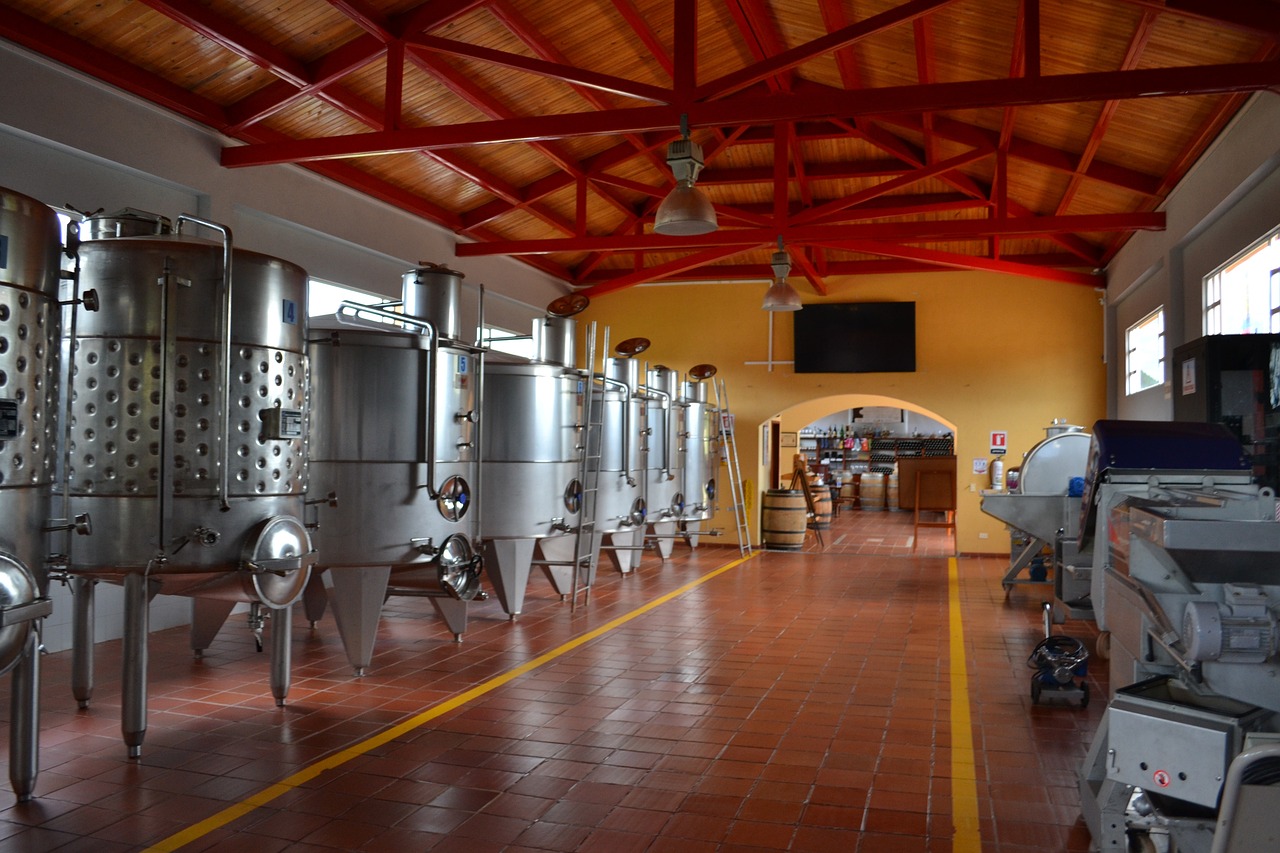
Conclusion
In conclusion, fermentation is not just a fascinating biological process; it is a transformative tool in the realm of organic waste management. By harnessing the natural power of fermentation, we can significantly reduce the volume of waste that ends up in landfills, thereby minimizing our environmental footprint. The process of fermentation generates valuable byproducts such as biogas and organic fertilizers, which can be leveraged to enhance agricultural practices and promote soil health. This creates a sustainable cycle where waste is not merely discarded but is instead repurposed into resources that benefit our ecosystem.
Moreover, the economic advantages of fermentation cannot be overlooked. As disposal costs decrease with reduced waste volume, businesses and municipalities can allocate resources more efficiently, paving the way for innovative waste management solutions. The integration of fermentation methods, such as anaerobic and aerobic fermentation, into existing waste management systems presents a promising pathway toward a more sustainable future.
However, it is essential to recognize that challenges still exist in the implementation of fermentation techniques. Issues such as odor control and process efficiency need to be addressed to maximize the benefits of fermentation. By investing in research and development, as well as embracing technological advancements, we can overcome these hurdles and fully realize the potential of fermentation in waste management.
As we look to the future, the role of fermentation in organic waste management appears bright. Increased awareness of sustainability and environmental conservation is driving innovation in this field. It is imperative that we continue to explore and invest in fermentation processes, not only to manage waste but also to create a cleaner, greener world for generations to come.
- What is fermentation? Fermentation is a natural metabolic process that converts sugars into acids, gases, or alcohol, often used in the management of organic waste.
- How does fermentation reduce waste volume? Fermentation breaks down organic materials, significantly decreasing their mass and volume, making disposal easier and more efficient.
- What are the byproducts of fermentation? The key byproducts of fermentation include biogas, which can be used for energy, and digestate, which can serve as a nutrient-rich fertilizer.
- What are the main types of fermentation used in waste management? The two primary methods are anaerobic fermentation, which occurs without oxygen, and aerobic fermentation, which requires oxygen.
- What challenges does fermentation face in waste management? Some challenges include odor control, process efficiency, and the need for appropriate technology to optimize results.
Frequently Asked Questions
- What is fermentation in the context of organic waste management?
Fermentation is a metabolic process that transforms organic materials, like food waste, into useful byproducts through the action of microorganisms. In waste management, it helps break down organic matter, reducing its volume and producing valuable resources like biogas and organic fertilizers.
- How does fermentation reduce waste volume?
Fermentation effectively breaks down organic waste, leading to a significant reduction in its mass. This not only makes disposal easier but also minimizes the amount of waste sent to landfills, which is crucial for reducing environmental impact.
- What are the benefits of using fermentation in waste management?
The benefits are numerous! Fermentation reduces waste volume, produces valuable byproducts such as biogas and organic fertilizers, and improves soil health. This contributes to a more sustainable and eco-friendly waste management system.
- What types of fermentation methods are available for organic waste?
There are two primary methods: anaerobic fermentation, which occurs without oxygen and produces biogas, and aerobic fermentation, which requires oxygen and is often used in composting to create nutrient-rich compost.
- How can fermentation benefit agriculture?
Fermentation can provide farmers with nutrient-rich fertilizers derived from organic waste, enhancing soil health and promoting sustainable farming practices. This not only boosts crop yields but also helps in reducing the reliance on chemical fertilizers.
- What challenges does fermentation face in waste management?
Some challenges include odor control, process efficiency, and the need for proper management to ensure optimal fermentation conditions. However, with the right approaches, these challenges can be effectively addressed.
- What does the future hold for fermentation in organic waste management?
The future looks bright! With ongoing technological advancements and a growing emphasis on sustainability, fermentation processes are expected to become more efficient and widely adopted, leading to innovative solutions in organic waste management.



















